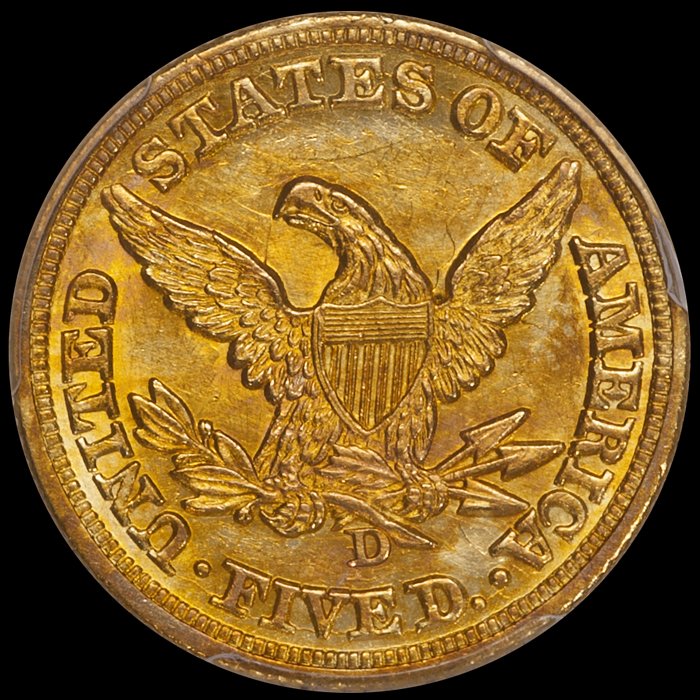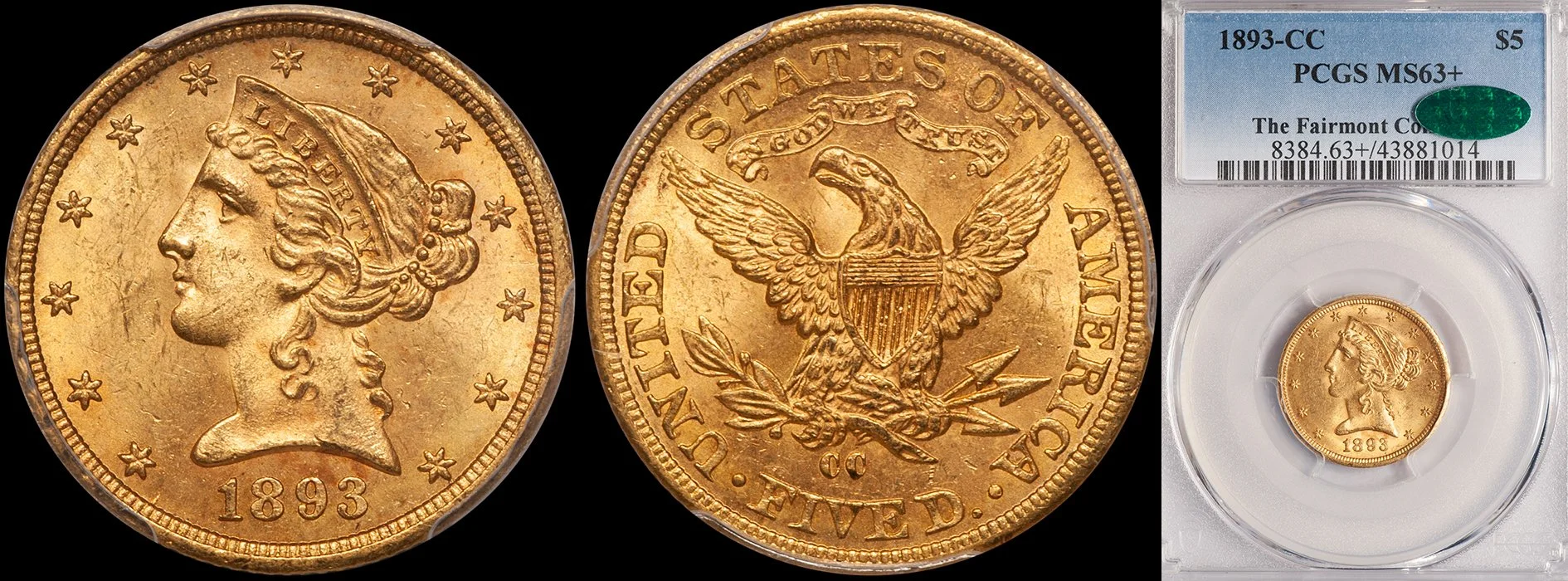New Market Trends in Dahlonega Gold Coins, 2023 and Beyond
/2021-2023 represented a dramatic change in the Dahlonega coin market. For nearly two full decades, prices stayed flat and demand was able to keep with supply, despite some fallow years in the late 2010s when it seemed like I’d never be able to buy another nice D mint coin again.
There was a confluence of factors which contributed to the revitalization of the D mint market around 2020 and moved these coins more to the mainstream from the pre-2020 Southern Cult that had been stashing coins in North Georgia seemingly forever. These include but were not limited to the following:
COVID: As with virtually all areas of the collectibles market, COVID had a huge impact on Dahlonega gold. With most people shut down for well over a year, numerous people researched Dahlonega coins online. According to the analytic pages on the back end of my website, searches for terms which included the word “Dahlonega” increased by over 100% from 2021 to 2022.
CAC: Southern gold specialists fought against CAC harder and longer than most, but they finally relented around seven to nine years ago. The substantial premiums these coins brought made new and old collectors pay attention to price levels and quality to a degree which they hadn’t before.
Fairmont: There have only been about 225+ Dahlonega coins sold thus far, but the impact of the Fairmont half eagles has been strongly felt in the entire dated gold market. To the credit of Stack’s Bowers, I tip my cap to them for a) keeping all the coins in this deal 100% unmessed-with and b) not dumping all the coins into one sale and “letting ‘em fly” as other firms would likely have done. It is my opinion that a whole new generation of collectors was created which uses these coins as models of quality and will pay up for really nice, crusty, non-messed with D mint.
Auraria: I had the good fortune to offer for sale the amazing Auraria Collection in 2021. This was one of the finest sets of Dahlonega ever put together, with over 50% of the issues in MS60 or finer and a host of Condition Census PCGS/CAC rarities included. There were 69 coins in the collection which sold for a total of slightly over $2 million. Remarkably, 42 different collectors purchased coins from this sale, including 9 who had never before bought a Dahlonega coin.
Hansen: The deep pockets of DL Hansen were all over the Dahlonega market, especially during the 2022 Stacks Bowers sale of the Sykes Collection where he set an all-time record for a single Dahlonega coin: the finest known PCGS/CAC MS62 1854-D $3 for which he paid $528,000.
1. Further Price Separation for Better Dates
In the Fairmont sales—as well as in other auctions—I have noticed that some of the scarcer but obscure dates in the half eagle series have been bringing big premiums. These include the 1849-D, 1851-D, and 1857-D.
This phenomenon is known as Market Premium Factor or “MPF.” As a series gains in popularity, the MPF increases. When a series is not popular, coins which are 10%, 20%, or even 30% scarcer than the most common date(s) tend to bring smaller premiums. In some cases, they make even bring no premium at all.
It never made sense to me that there should be little price separation between common date half eagles such as the 1852-D, 1853-D, and 1854-D versus much scarcer issues such as the three listed above. As recently as a few years ago, an 1851-D in PCGS 40 or 45 might not sell for much—if any—premium over an 1852-D in the same grade. Today, it is not unreasonable to think that a nice EF 1851-D with a sharply detailed mintmark would sell for a full 2x multiple over an 1853-D in the same grade.
2. Certain Die Varieties Become Widely Collected
There are very few die varieties in the gold dollar and quarter eagle date runs from this mint, which leaves the Dahlonega half eagles as the most fertile hunting ground for interesting die varieties. I don’t think that D mint half eagles will ever become as actively collected by variety as such series as 1793-1814 Large Cents and 1794-1836 half dollars. There are, however, some significant naked-eye varieties which have already show signs of popularity and which likely will sell for significant premiums in the course of the next few years.
The major varieties which I think have the greatest potential to appreciate in value include the following:
1848-D/D $5.00 PCGS MS62 reverse
1840-D Small D
1841-D Tall D
1843-D Small D
1848-D/D
1854-D Medium D
1855-D Large D
1859-D Large D
1860-D Large D
Note: I haven’t included the 1842-D Large Date and the 1846-D/D as these are well-known, and are collected as regular issue within the Dahlonega half eagle series.
What do all of these varieties have in common? They are all currently attributed by PCGS, and are identifiable with the naked eye. It is my opinion that the numerous “micro varieties” in the Dahlonega series will never be collected by more than a small number of fanatical outliers, and will therefore never bring much—if any—premium.
If I had to predict the varieties which will see the strongest demand, I would select the 1840-D Small D and the 1841-D, as well as the better-known 1848-D/D.
3. Further Price Separation for PQ Original Coins
As far back as the mid-1980s there was price separation for a nice, original, slabbed Dahlonega gold coin. I wouldn’t have had a second thought of writing a check for $5,000 for a crusty AU55 1849-D, while valuing a baking soda scrub job in a 55 holder at $3,000 or less.
Today we are seeing this price separation in grades as low as VF while nice, PQ, EF, and AU coins can command premiums of 100% or more.
It is important to note that just because a D mint coin is approved by CAC, this doesn’t mean it is automatically worth full PCGS Price Guide. If the coin is dirty and original but it has limited eye appeal, it will not command the same premium as a gem original example of the same date in the same grade.
I am seeing similar price patterns in the Dahlonega gold dollar and quarter eagle types as well.
1854-D $3.00 PCGS AU55 CAC
The 1854-D $3 is worth a paragraph on its own. Heritage 6/2023: 93002 was a decent NGC AU58 which brought $93,000. In January 2023, Heritage sold the Bass coin in the same grade but in a PCGS holder and approved by CAC for $192,000. And this was not a one-time outlier as Stack’s Bowers sold a different PCGS/CAC AU58 for exactly the same amount as the Bass coin.
4. Small Letters Reverse Half Eagles Become a Distinctive Type
How many types of half eagles were made in Dahlonega?
The obvious answer is three: the Classic Head (1838-D), the first Liberty Head with an obverse mintmark, and the second Liberty Head with the mintmark moved to the reverse. (1840-1861).
But this is incorrect as there are, in fact, four.
From 1840 through 1842, half eagles from Dahlonega all employed a Small Letters reverse. At some point in 1842, the reverse was changed to a Large Letters format.
1840-D Small D $5.00 PCGS AU55
What this means is that the 1840-D, 1841-D, and the earlier strikes dated 1842-D (the Small Date coins) are all distinct type coins, which increases their significance to collectors who are assembling 10-coin denominational type set from this mint (three gold dollars, two quarter eagles, a single three dollar, and now four half eagles instead of three).
I have seen a strong increase in demand for all three of the Small Letters reverse issues, and I expect them to show a continued high level of demand.
5. Say “Hello” to the $5,000 Choice EF and the $10,000 Choice AU Common Date $5
Collectors were able to purchase decent quality EF45 common date half eagles for around $2,500-3,000, and nice AU55 to AU58 coins for $5,000-6,000 for a long, long time. While a few really vile coins are still at the top of these price ranges, nice to very nice coins are likely to approach $5,000 for choice EF45s, and $10,000+ for nice AU58s.
While these levels seem “toppy,” I don’t consider a legitimately AU58 “common” date CAC approved half eagle to be a poor value. When you look at current CAC populations for these more available issues, the actual number of coins graded is tiny. To better put this in perspective, the combined number of CAC approved AU58 1852-D, 1853-D, and 1854-D half eagles (the three most common half eagles from this facility) stands at just 31. When you subtract resubmissions and marginal coins, it is likely that we are looking at not more than two dozen coins! To my way of thinking, $10,000 for a nice CAC approved AU58 1853-D half eagle still sounds reasonable.
6. Dahlonega Quarter Eagles Wait for Their Moment
Certain coins are just too scarce for their own good. This statement can be applied to a number of Dahlonega quarter eagles in any grade, and to all Dahlonega quarter eagles in properly graded AU58 and finer. Because of the lack of relevant recent auction trades, price increases in this series don’t have the velocity of the more frequently-traded D mint half eagles. At this point in time, you can make the case that virtually all nice Dahlonega quarter eagles are undervalued in the current market.
As I’ve stated for years, even the more available quarter eagles from Dahlonega (namely the 1843-1848 issues) are legitimately rare in fully Uncirculated grades; note that in most cases, this requires a coin to grade MS61 to MS62 or finer.
1843-D $2.50 Large D PCGS MS61 CAC
CAC populations for MS60 and finer Liberty Head D mint quarter eagles currently stands at a total of just 30 coins; that figure rises to 32 if the 1839-D Classic Head is included. If you average out the value of these 32 coins at $35,000 each—which seems a bit high—we are talking a market cap of just $1,120,000. But if you sent me a million dollar+ check to fill this order and gave me two years, I seriously doubt I would spend a quarter of your money.
When the next very good to excellent specialized collection of Dahlonega quarter eagles comes up for sale—whether it be on my website as a Concierge Sale™ or at public auction—watch out for potential fireworks.
Are you thinking of buying or selling Dahlonega gold coins? If so, please contact me at 214.675.9897 or via email at dwn@ont.com.















